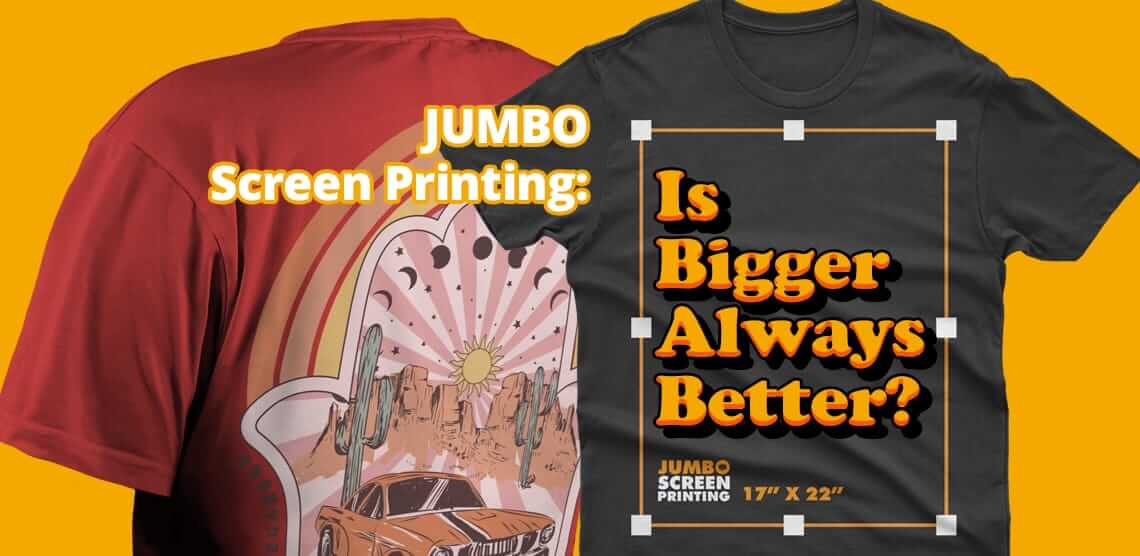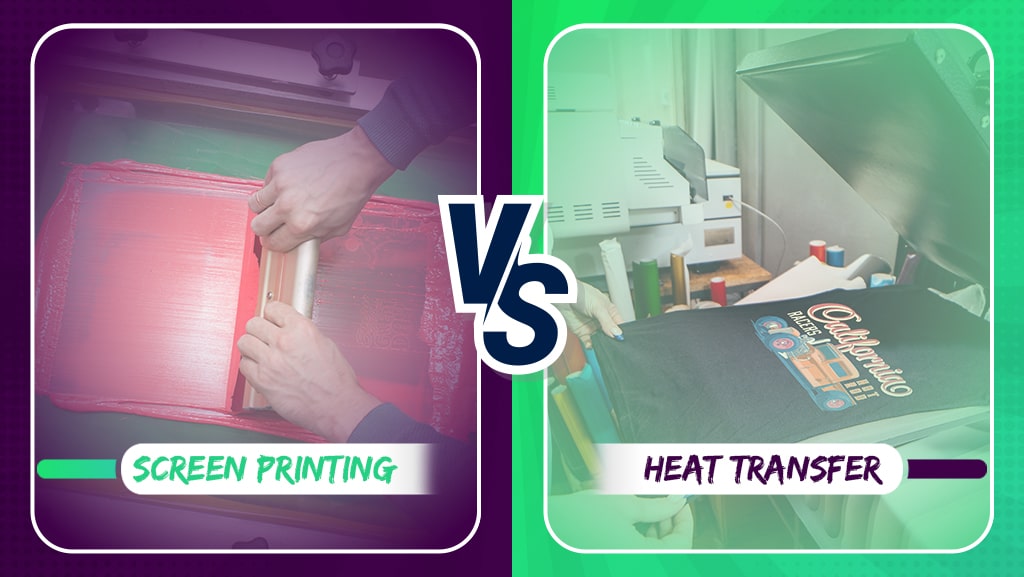About Tx Tees
About Tx Tees
Blog Article
The Buzz on Tx Tees
Table of ContentsExcitement About Tx TeesThe Basic Principles Of Tx Tees The Basic Principles Of Tx Tees Get This Report about Tx TeesThe Single Strategy To Use For Tx Tees9 Simple Techniques For Tx TeesTx Tees Things To Know Before You Buy
Include up various other prices, like the number of utilities it takes to run the store and the cost of ink and emulsion per design. Take the print below.The emulsion should just be a couple of cents because you 'd just need to coat one screen for this task. So just how much should you charge per t-shirt to make an earnings? Normally, printers try to make up to 45% profit on a print job. Below's a table to help you establish that: complete price per product percent of desired profit as a decimal (example:.25 or.45) profit made per thing per task Now let's speak about the success of DTF.

With DTF, you can publish a handful of t shirts, or just one. Both display printing and DTF have their particular niches in the world.
The 2-Minute Rule for Tx Tees
The most effective means to know? Ask about and see what print stores like your own are doing. screen printer. Try both out and see which you like much better
When you're picking what sort of printing approach to use for publishing your art work styles on your garments, it's vital that you recognize the differences in between these two strategies so you can make the most of outcomes while decreasing prices. Screen printing is one of the most frequently made use of method for publishing styles on fabrics.
DTG printing is additionally called place or straight to garment printing due to the fact that it prints only what is required as opposed to making a display as display printers do. https://txtees02.carrd.co/. Display printing functions by screen filler squeegee display printing ink display mesh screen, after that moving the picture to garment making use of warm and/or stress
The DTG printer utilizes unique dye-sublimation inks that are applied right into a pre-designed photo by an electronic printing system. The inks become part of the fabric, permitting for vivid shades and remarkable detail. It's likewise called place or direct to garment printing since it prints just what is needed rather of making a screen as screen printers do.
How Tx Tees can Save You Time, Stress, and Money.
First, it's much quicker - you can print a fullcolor photo in mins, instead of hours for display printing. Second, there's no established up time or prices included - you can print any kind of style you like, without having to develop a screen. Third, there's no waste - since screen printers screen print one design each time, they need to screen each color individually.
The paper is extremely pricey and can only be used once. Once it's printed on, it needs to be discarded. - The first purchase rate is less than the ahead of time financial investment of DTG printers- You can publish multi-color designs one display at a time rather of needing to print each color separately like DTG printing.

The smart Trick of Tx Tees That Nobody is Talking About
Instead of utilizing display mesh get redirected here as display printers do, dye sublimation printers make use of laser innovation to move your images onto garments or paper. A warmth process moves the color from its solid-state directly into the gas stage which subsequently merges it onto fabric substratums when they are rapidly warmed to heats under high pressure.
Sublimation printing is environmentally friendly. It uses much less water than screenprinting, and since it doesn't involve making use of unsafe solvents, it's secure for all kinds of clothing. The color sublimation inks are additionally odorless when healed, unlike screen printers that make use of hazardous chemicals during the display printing process that leave an undesirable odor.
They additionally save cash on pricey tools like direct exposure devices given that color sublimation printers do not need a UV exposure system or a flash treatment stove that is generally made use of in display printing (screen printer). What is straight to garment printing (DTG Printing)? DTG printing is a digital screenprinting procedure that prints straight onto fabric making use of specialized inkjet printers
The Facts About Tx Tees Revealed
DTG printing offers many advantages over traditional screenprinting, consisting of the ability to publish photographic top quality images, greater shade vibrancy, and the ability to publish layouts on darker textiles. DTG printers work by heating up the textile ink till it turns right into a gas. The gas then penetrates the fabric, bonding with the fibers to develop an irreversible print.

Screen printers just prepare their display then begin printing until they run out of product or ink.- There is a vast variety of skilled display printers throughout the globe, which can be helpful for beginners. - It's a slower procedure - display printers frequently need to wait for the ink to completely dry prior to they can publish the next shade- Display printers require manual work, so there's a higher learning curve and it takes longer to generate a premium layout- Screen printing isn't as exact as DTG printing, so you may obtain some "blood loss" of colors from one part of the photo onto another if not done properly.
Indicators on Tx Tees You Should Know
Nevertheless, rather than using screen mesh as screen printers do, dye sublimation printers make use of laser modern technology to move your photos onto garments or paper. A warm process moves the dye from its solid-state directly right into the gas phase which consequently merges it onto fabric substrates when they are swiftly heated up to heats under high stress.
Sublimation printing is environment-friendly. It uses less water than screenprinting, and because it doesn't involve using dangerous solvents, it's risk-free for all kinds of garments. The dye sublimation inks are additionally odor-free when cured, unlike screen printers that make use of harmful chemicals during the screen printing procedure that leave an undesirable smell.
They additionally conserve cash on expensive devices like direct exposure systems because color sublimation printers don't require a UV direct exposure device or a flash cure stove that is generally utilized in display printing. What is direct to garment printing (DTG Printing)? DTG printing is an electronic screenprinting procedure that prints directly onto material making use of specialized inkjet printers.
Not known Facts About Tx Tees
DTG printing offers many benefits over standard screenprinting, consisting of the ability to publish photographic quality photos, better color vibrancy, and the ability to print styles on darker fabrics. DTG printers work by heating up the fabric ink till it develops into a gas. The gas then penetrates the material, bonding with the fibers to produce an irreversible print.
Report this page